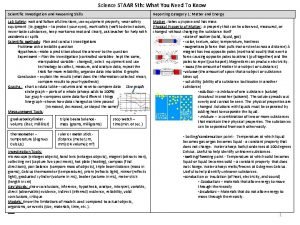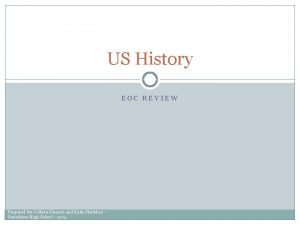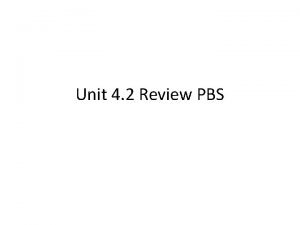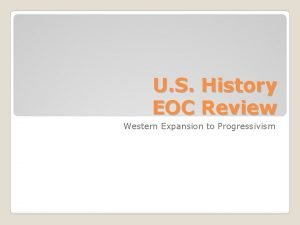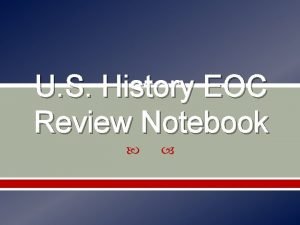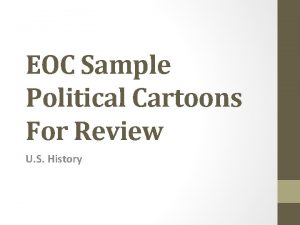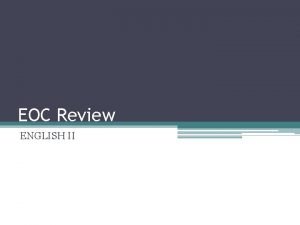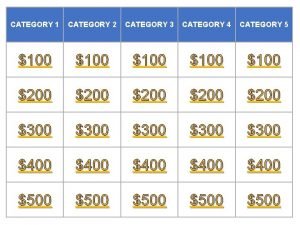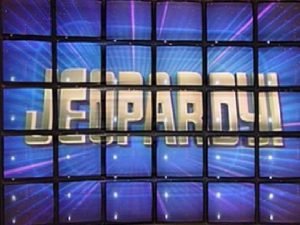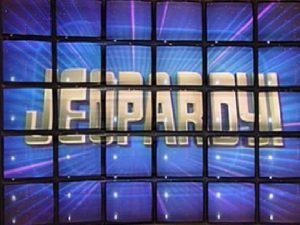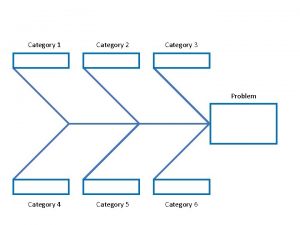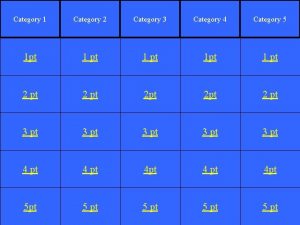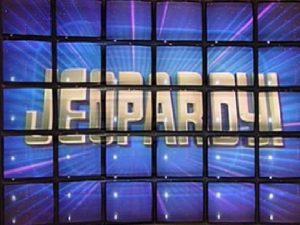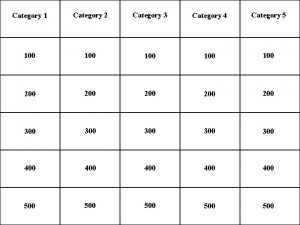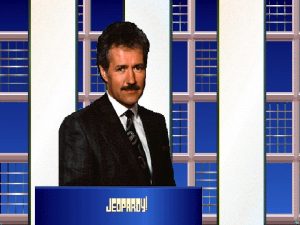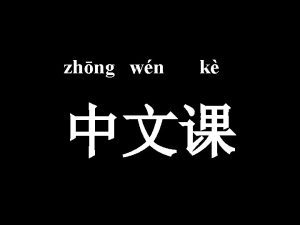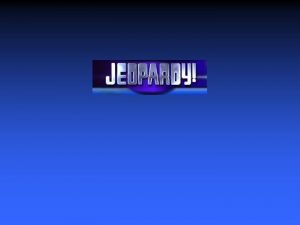STAAR EOC Category 4 Organization of Living Systems




























- Slides: 28

STAAR EOC Category 4 Organization of Living Systems

Organization of Cells in an Organism Increase in size and specialization Increase in number Organism System Organ Tissue Cell

Nervous System 1) Central nervous system: • consists of: – brain and – spinal cord • Voluntary: • you consciously control (lift arm) • Involuntary: • without conscious control (breathing)

Nervous System 2) Peripheral nervous system: -consists of all other parts of the nervous system. • Carries nerve impulses CNS to the body and back

Nervous System • Neurons (Nerve Cells): – Axon – sends signal – Cell Body – controls cell functions – Dendrite – receives signal • The space between nerve cells is called the synapse.

Circulatory System Main Function: -Transport system. • The Heart: • is the pump of the circulatory system. • Arteries • carry blood away from the heart and • Veins • carry blood back to the heart.

Immune System Function: • protects you from infections and illnesses. • Second Line of Defense: – inflammatory response • (swelling, redness due to histamine release), – fever – white blood cells that destroy pathogens

Digestive System • Food is: – Broken down into smaller molecules…. . – That can be used by: • Our cells • Alimentary canal Includes: – – – mouth esophagus stomach small intestines large intestines


Respiratory System • delivers oxygen to the…. -circulatory system • and helps remove -carbon dioxide.

Respiratory System • https: //www. youtub e. com/watch? v=z. R v 5 t. NCMpy. Y

Asthma • https: //www. youtub e. com/watch? v=7 E Do 9 p. UYv. PE

Reproductive System • Includes parts that… – Creates gametes like…. . • Sperm and Egg – enables fertilization to create a…… • Zygote – in the female, supports the growth of the fetus. In the…. • Uterus

Female Reproduction Ovulation https: //www. youtube. com/watch? v=n. Lmg 4 w. SHdx. Q

Male Reproduction • https: //www. youtube. com/watch? v=rlkq. Ym_Lxg. U

Excretory System Responsible for removing…. – Wastes Pathway of Urine: Produced in the…. Kidney -> Ureter -> Stored in the…… Bladder -> – Urethra

Endocrine System • Communicates to the body by secreting: – chemicals called hormones. • Hormones regulate: – many different body functions. • Hormones are secreted by: – glands

Q: Most viruses infect a specific kind of cell. Which of the following are infected by the human immunodeficiency virus (HIV)? F Helper T cells G Liver cells H GABA-receptor cells J Red blood cells

Ask yourself, which cell type deals with immunity? F Helper T cells G Liver cells H GABAreceptor cells J Red blood cells • Answer? Helper T cells. • All the rest are body cells with specific jobs that do not relate to immunity.

Q: Nutrients from digested food move from the digestive system directly into the — Endocrine system does not transport anything. So. . . A circulatory system B integumentary Excretory system gets rid of waste CO 2 and H 2 O, not C excretory food. So. . system Integumentary D endocrine system holds organs and system The Circulatory tissues in place. System carries So. . . everything to every

Q: The medulla, part of the brain stem, reacts quickly to increased levels of CO 2 in the blood and stimulates a response from the — A excretory system B immune system C respiratory system D integumentary system Increased respiration gets rid of excess CO 2

Q:

Q: Which structure in the upper arm is responsible for raising the lower arm? A 1 B 2 C 3 D 4 In order to raise it, it must be attached, so its not 1 or 2. 4 is a bone not a muscle, so its answer: 3

Q:

Q:

Q: The substances made by the endocrine system that carry information in the form of chemical messages are called – A. B. C. D. Neurons Impulses Nutrients Hormones

Q: The two body systems most involved with providing nutrients to cells are the – A. B. C. D. Digestive and circulatory systems Digestive and nervous systems Circulatory and respiratory systems Digestive and urinary systems

Q: The skin is the main organ of the integumentary system. Sweat glands in the skin produce perspiration to remove excess salts and water from the body. When the skin releases perspiration, it is acting as part of the. A. B. C. D. Respiratory system Urinary system Excretory system Nervous system
 11th grade us history staar review games
11th grade us history staar review games Https://play.kahoot.
Https://play.kahoot. Reporting category 3 earth and space
Reporting category 3 earth and space Erate category 2
Erate category 2 Interdependence within environmental systems
Interdependence within environmental systems Category 5 interdependence within environmental systems
Category 5 interdependence within environmental systems Pyramid hesd
Pyramid hesd Is a burning candle living or nonliving
Is a burning candle living or nonliving Living non living dead
Living non living dead What is the smallest living unit of life
What is the smallest living unit of life Organization of living creatures
Organization of living creatures Florida us history eoc review
Florida us history eoc review Pbs eoc review
Pbs eoc review Us cavalry general whose unwise and reckless
Us cavalry general whose unwise and reckless Us history eoc review notebook
Us history eoc review notebook World power era eoc blitz review
World power era eoc blitz review How hard is the biology eoc
How hard is the biology eoc English 2 staar test
English 2 staar test The teapot dome scandal centered around *
The teapot dome scandal centered around * Youtub.eoc
Youtub.eoc Science eoc review
Science eoc review Physical science eoc review
Physical science eoc review English eoc tips
English eoc tips Hbs eoc review
Hbs eoc review This 1924 cartoon satirizes a scandal that led to
This 1924 cartoon satirizes a scandal that led to Civis360
Civis360 Escambia biology
Escambia biology English eoc review
English eoc review Eoc literary terms
Eoc literary terms


